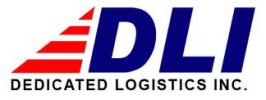Driver Training to be Required
Submitted by Bill on
The long awaited Driver training rule will be published on Monday
Proposal requires 30 hours behind the wheel, 'demonstrated proficiency'
This rule will have a significant impact on new drivers.
according to: Kevin Jones | Fleet Owner
The long-awaited federal standards for commercial, entry-level driver training (ELDT) will be published Monday in the Federal Register, and much of it follows the recommendations made by an industry panel last June as part of this “negotiated rulemaking.”
“A diverse group of commercial motor vehicle stakeholders completed a tremendous amount of work, and that effort resulted in an unprecedented consensus,” said Federal Motor Carrier Safety Administration Acting Administrator Scott Darling. “We’ve designated 2016 as our ‘Year of Partnerships’ and these comprehensive entry-level driver training standards exemplify our commitment to working closely with our safety partners, including state and local law enforcement, the safety advocacy community, and all other stakeholders to reduce crashes and to save lives.”
In the pre-publication version posted Friday, FMCSA says the notice of proposed rulemaking (NPRM) would enhance highway safety by establishing “a more extensive ELDT protocol” and by increasing the number of drivers who receive the training.
FMCSA proposes new training standards for individuals applying for an initial CDL, an upgrade of their CDL1 (e.g., a Class B CDL holder seeking a Class A CDL), or a hazardous materials, passenger, or school bus endorsement for their license. (Military drivers, farmers, and firefighters are generally excepted from the CDL requirements in part 383, and they are excepted from this proposed rule, FMCSA notes.)
The curricula generally are subdivided into theory and behind-the-wheel (BTW) (range and public road) segments.
There is no proposed minimum number of hours that driver-trainees must spend on the theory portions of any of the individual curricula. The NPRM does propose that Class A CDL driver-trainees must receive a minimum of 30 hours of BTW training, with a minimum of 10 hours on a driving range. Driving on a public road would also be required, and Class A CDL driver-trainees may fulfill this requirement by either driving 10 hours on a public road, or by driving 10 public road trips (each no less than 50 minutes in duration).
And “irrespective of the number of hours of BTW training,” the training provider must not issue the training certificate unless the student “demonstrates proficiency” in operating a commercial vehicle.
Indeed, in defending the BTW minimums, FMCSA notes the emphasis on performance objectives, “as illustrated by the level of discretion that instructors have” when assessing the performance of individual driver trainees.
“The NPRM proposes that instructors maintain significant flexibility, within the total number of hours required for BTW training, to allot more or less time to specific elements of the training according to the instructor’s evaluation of the trainee’s demonstrated performance of required skills,” the notice states.
The proposed training curricula also includes a unit addressing “the right of an employee to question the safety practices of an employer” without incurring the risk of losing a job “simply for stating a safety concern.” Driver-trainees will also be instructed in procedures for reporting to FMCSA incidents of coercion from carriers, shippers, receivers, or transportation intermediaries, FMCSA points out.
Additionally, the NPRM proposes that a CDL holder who has been disqualified from operating a CMV must successfully complete refresher training.
Training providers must, at a minimum, offer and teach a training curriculum that meets all FMCSA standards for entry-level drivers and must also meet requirements related to: course administration, qualifications for instructional personnel, assessments, issuance of training certificates, and training vehicles (i.e., equipment). Training providers that meet these requirements would be eligible for listing on FMCSA’s Training Provider Registry (TPR).
The proposed compliance date for this rule is three years after the effective date of the final rule. This phase-in period would also allow time for the driver training industry to develop and begin offering training programs that meet the eligibility requirements for listing on the TPR, the NPRM states.
Members of the public will have the opportunity to review the NPRM and submit comments to the docket for 30 days following its publication in the Federal Register.
More Recent News Stories








